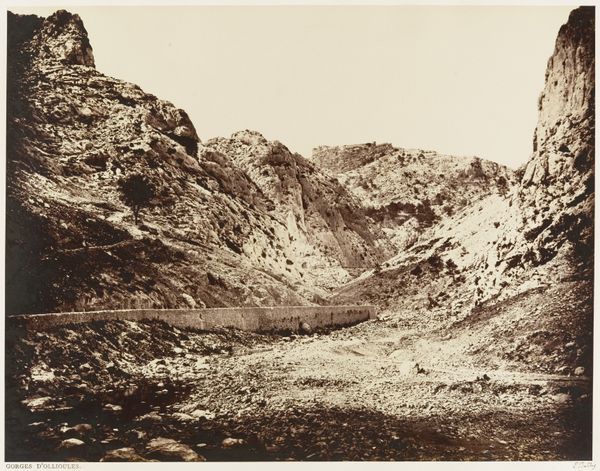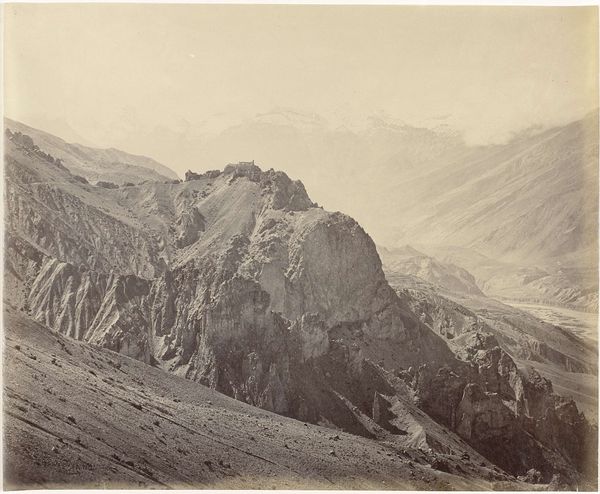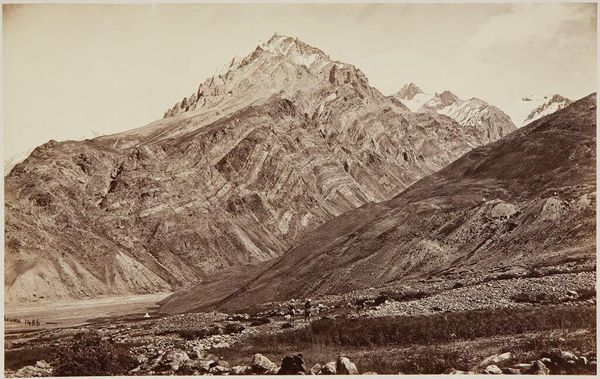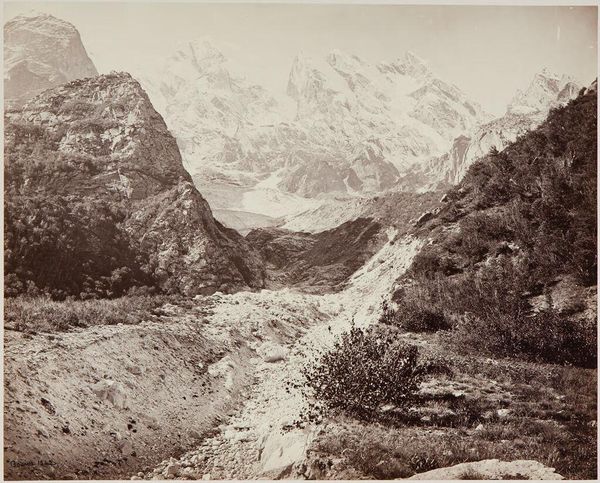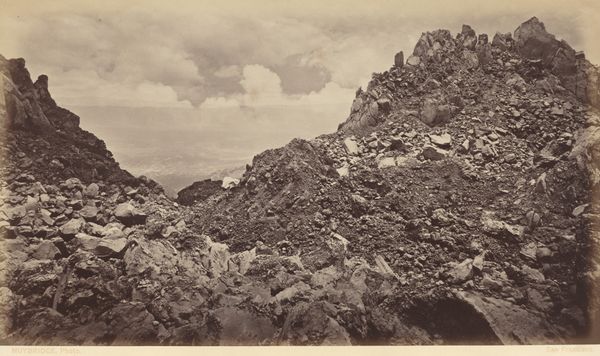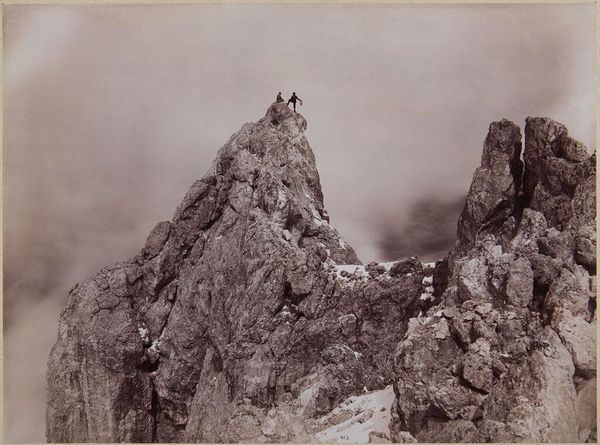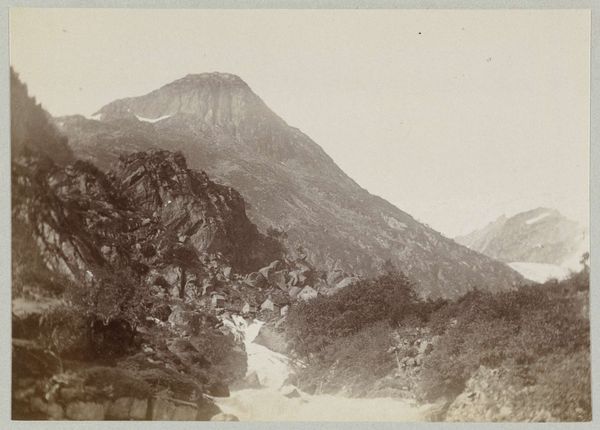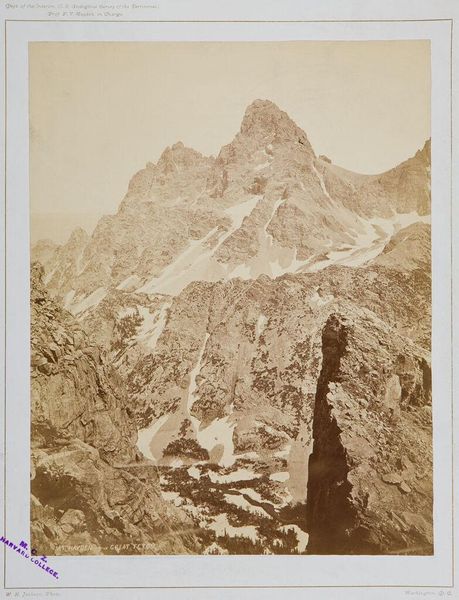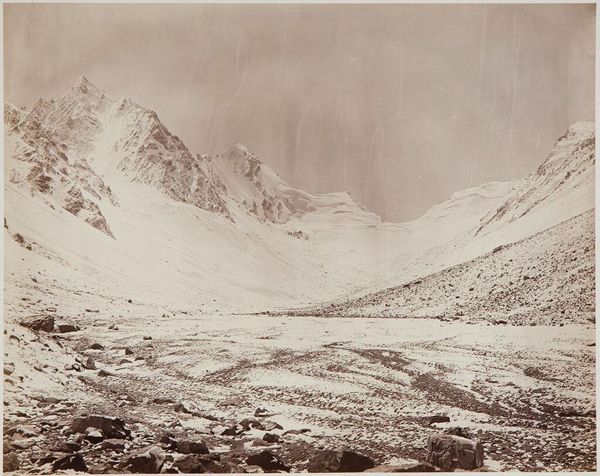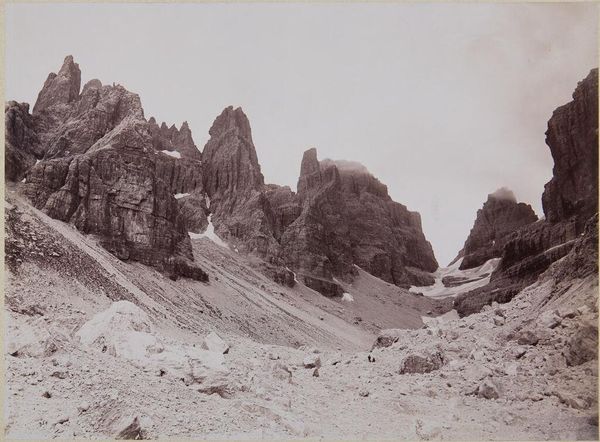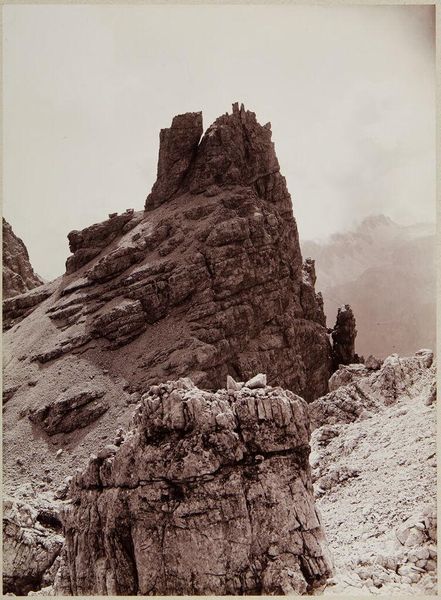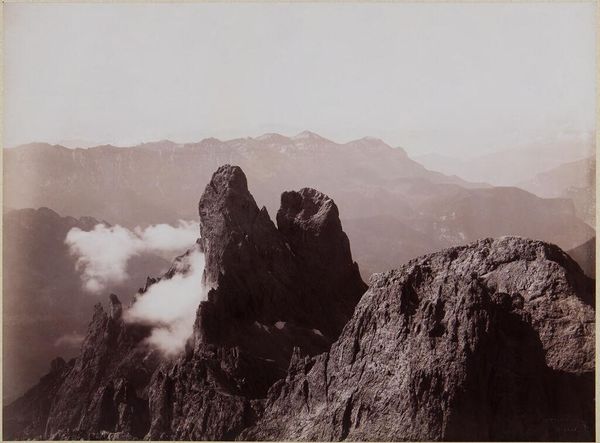
Dimensions: height 125 mm, width 175 mm, height 322 mm, width 498 mm
Copyright: Rijks Museum: Open Domain
Editor: This is "Monte d'Oro op Corsica," a gelatin silver print by Henry Pauw van Wieldrecht, dating from around 1886 to 1896. There's a certain starkness to it, a severity almost. What do you see in this piece, beyond just a mountain? Curator: I see a statement about power, and about vulnerability. The mountain dominates, certainly, an imposing force. But consider when this photograph was taken – during a period of intense colonial expansion. What does it mean to capture, to possess, a landscape in this way? What isn’t present? Editor: I guess I hadn't thought of it like that. What do you mean, what isn't present? Curator: Where are the people? Corsica has a rich, complex history, distinct cultural traditions. To strip the land of its inhabitants, to present it as this untouched, pristine vista… isn’t that a form of erasure? Consider who had the power to make these images, and whose stories were left untold. What narratives are lost when we focus solely on the sublime power of nature? Editor: So, it's less about the mountain itself, and more about what it represents in a socio-political context? Curator: Precisely. How do we grapple with landscape photography that romanticizes certain views while simultaneously obscuring colonial impacts, resource extraction, and the displacement of indigenous populations? The question, always, is who benefits from this representation, and who is rendered invisible. Editor: I’ll definitely look at landscapes differently now. This has given me so much to think about. Curator: As it should! Art, even a seemingly straightforward landscape photograph, is never neutral.
Comments
No comments
Be the first to comment and join the conversation on the ultimate creative platform.
